300x600
Best vegetable garden layout ideas on soil, sun orientations, spacing, varieties, plans & design secrets to create productive & beautiful kitchen gardens.
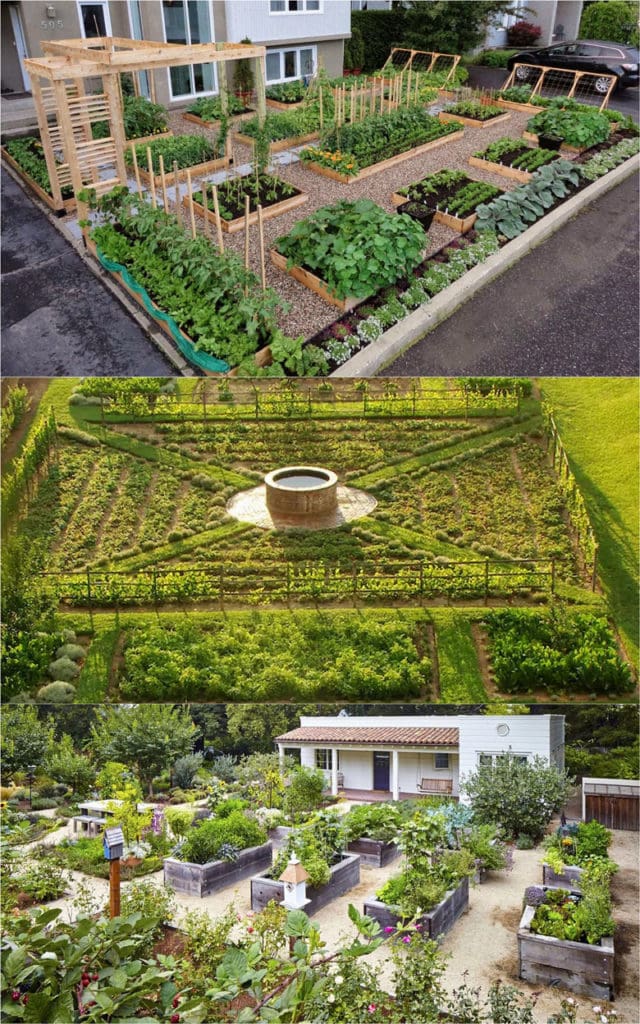
I found that the best vegetable garden layout & designs invariably have a lot of things in common. They are all well planned, easily accessible, very productive, inviting, and beautiful .
Today I am super excited to share with you 6 secrets to create great vegetable garden layout & designs and practical tips you can implement in your own garden right away!
1. START WITH SUN AND SHADE WHEN CREATING VEGETABLE GARDEN LAYOUT AND DESIGNS
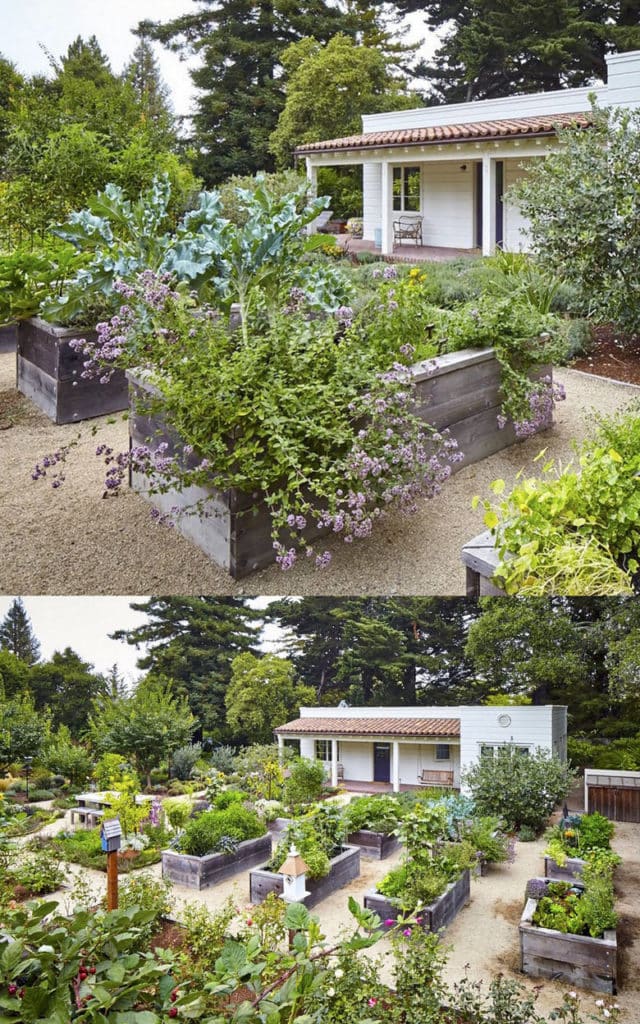
Most vegetables grow best in full sun. Not all open areas in a garden will be sunny. A tall tree or building can cast several hundred feet of shade when the sun is lower in the year from late fall through early spring.
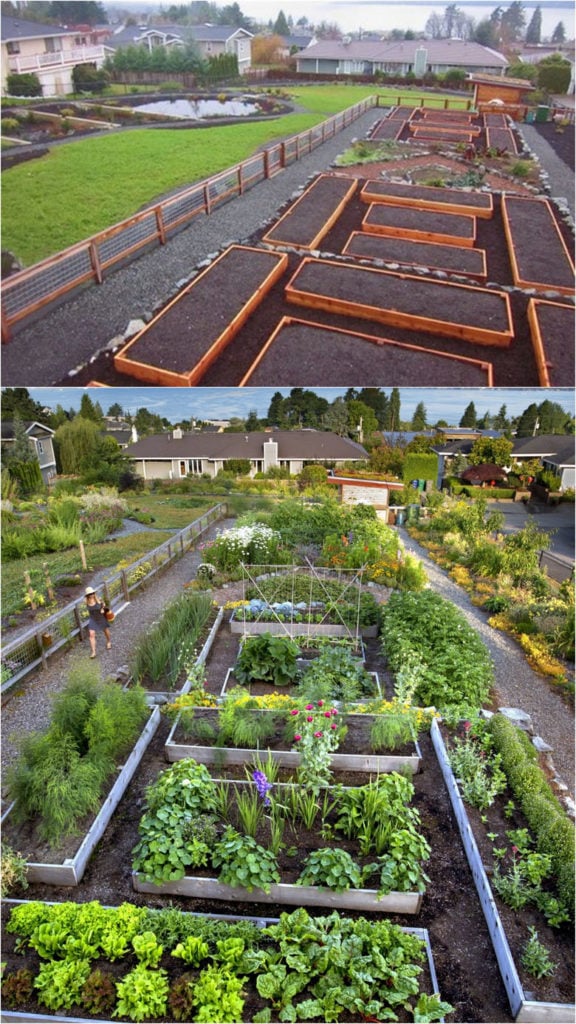
Always choose the most sunny location you can for a kitchen garden, where plants can get at least 5-6 hours of direct sun per day, especially between 9 a.m. and 4 p.m. Usually the south, south west, or south east side of a house is great for a veggie garden on northern hemisphere.
What direction should vegetable garden rows run? Typically the garden gets more sun exposure when rows are running north south direction.
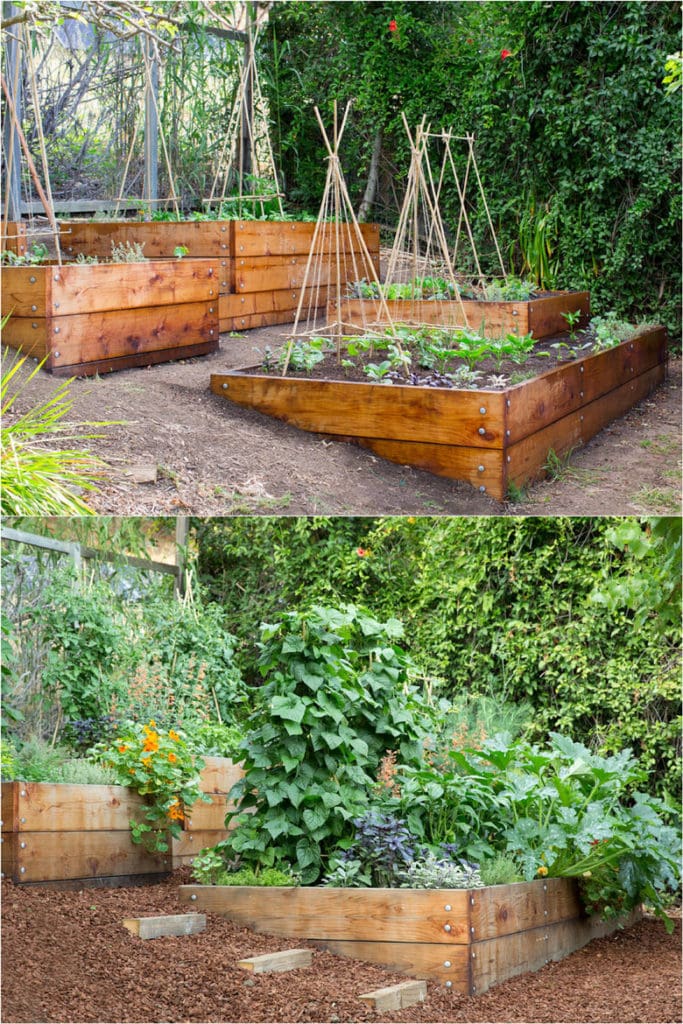
Sometimes we can not do so, such as in this sloped garden. A good alternative is to plant shorter plants such as cabbage, onion, or zucchini on the south side of a garden bed, and taller plants such as pole bean, fava bean, tomato etc on the north side so the taller plants won’t shade the shorter plants.
2. WELL DESIGNED BEDS AND PATHS IN VEGETABLE GARDEN LAYOUT
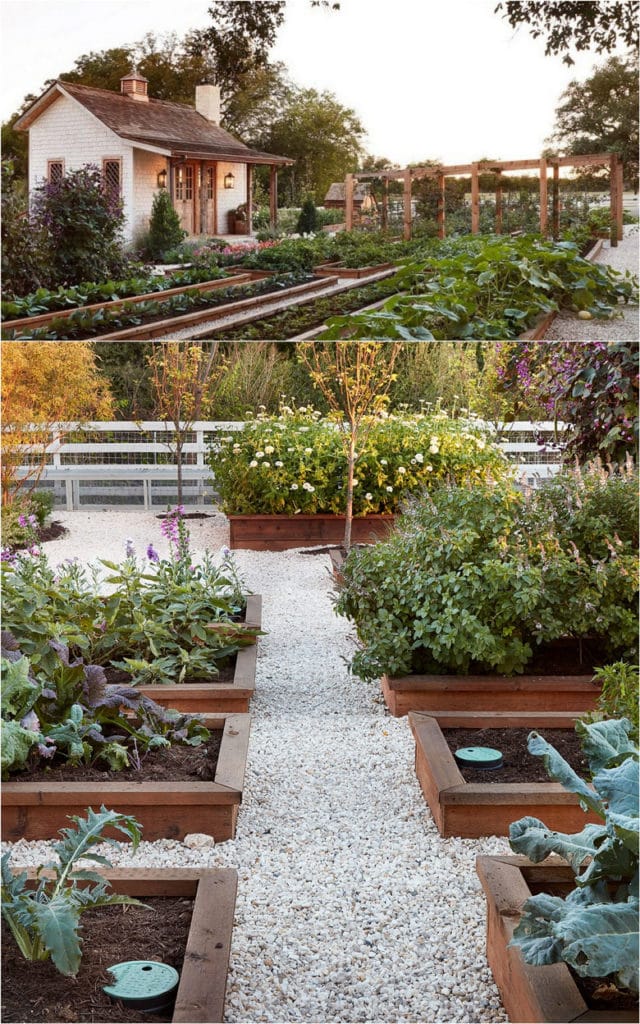
A well designed vegetable garden layout needs to have good circulation paths. A main path should be at least 30 inch wide for ease of circulation. You can have narrower paths or stepping stones through garden bed as well.
Garden beds should be less than 4′ wide to easily reach any plants in the center without stepping onto the soil.
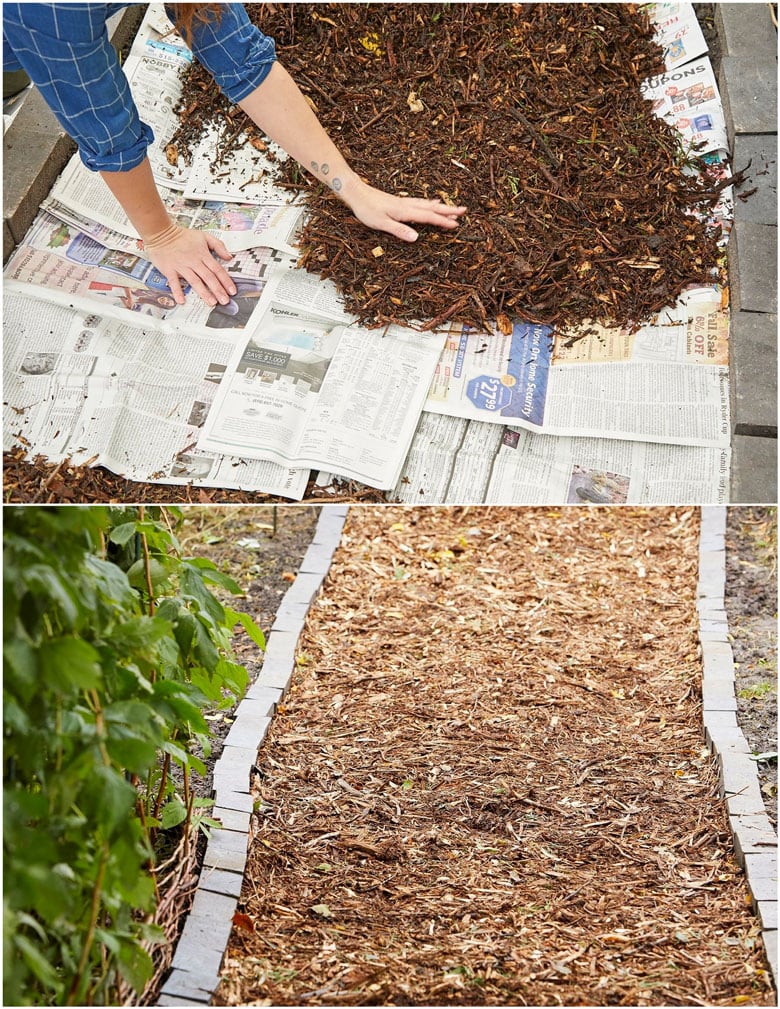
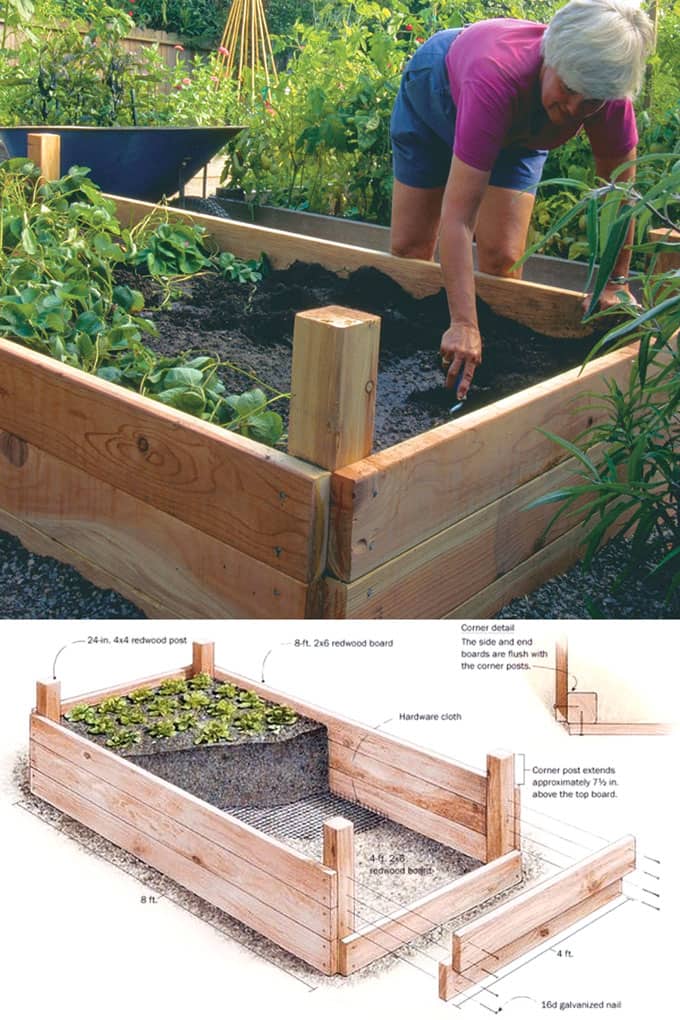
3. HOW TO SPACE VEGETABLES IN A GARDEN
When you are designing what to plant in your vegetable garden, it’s important to know how far to space vegetables in a garden bed.
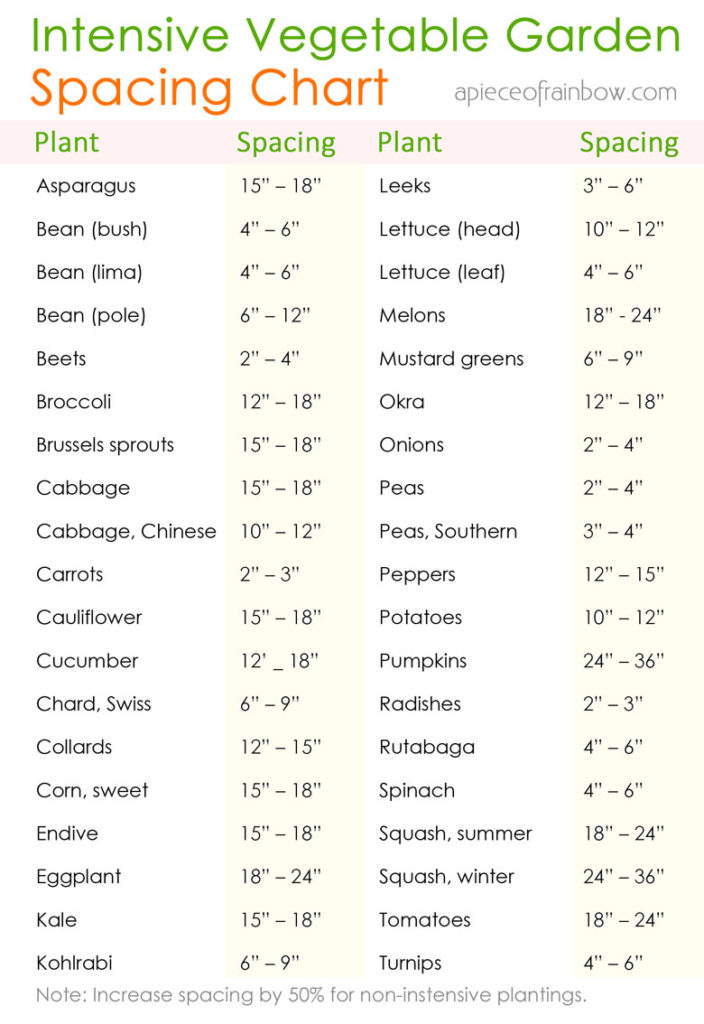
You can find the spacing requirements of different plants on a seed packet, or use this spacing chart above. This is for intensive plantings with good soil in small space or raised beds. Increase the spacing by x1.5 or x2 if you have a bigger garden area.
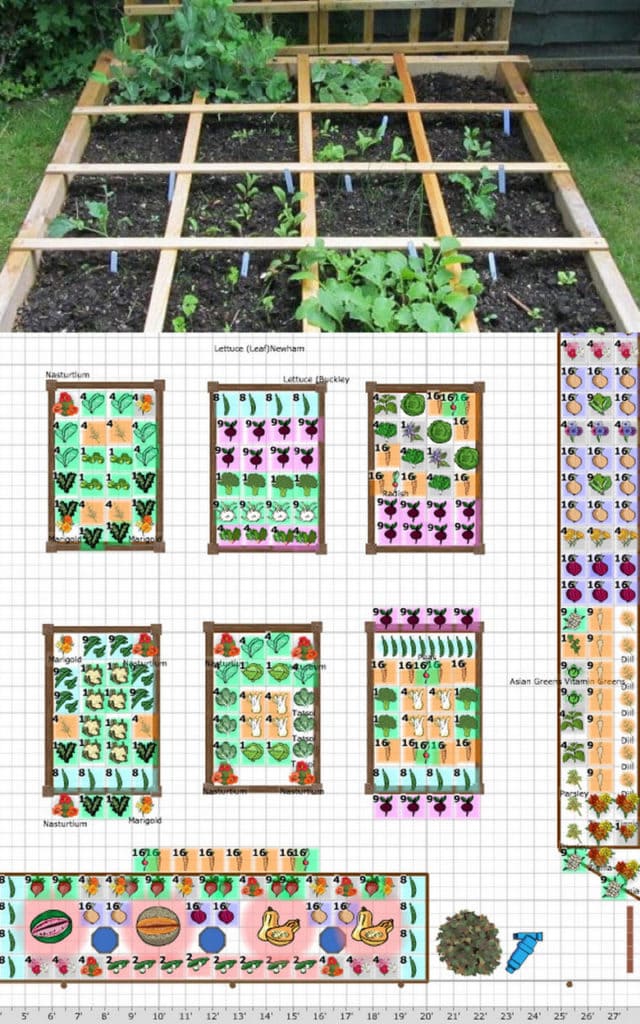
Another popular edible garden design is the square foot garden. Square foot gardening system is the practice of dividing the growing area into 1 foot square sections for better planning of an intensive vegetable garden.
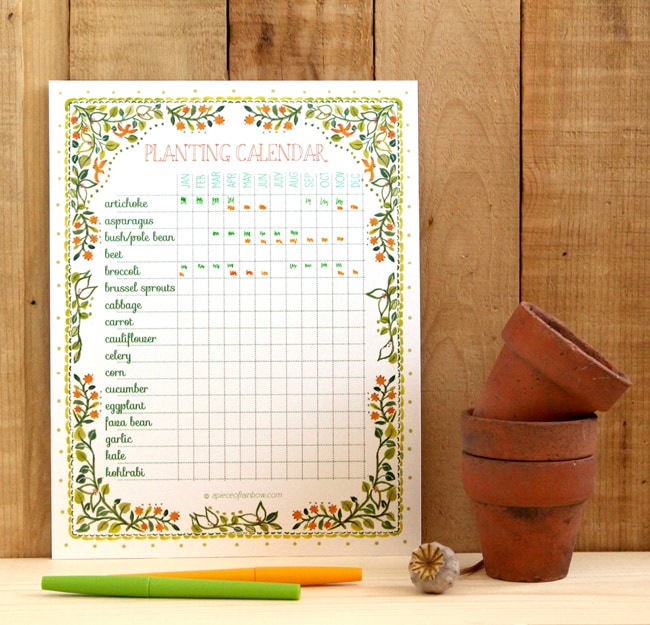
4. LEARN FROM BEAUTIFUL KITCHEN GARDEN DESIGNS
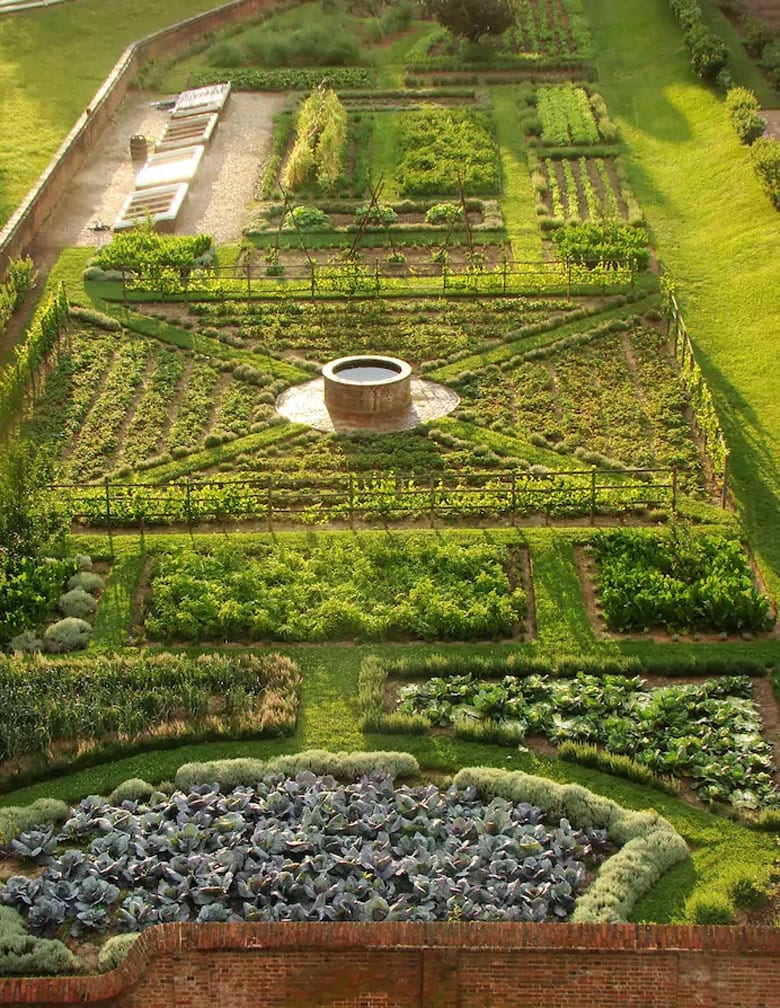
There are so many beautifully designed kitchen gardens and potagers throughout history to draw inspirations from.
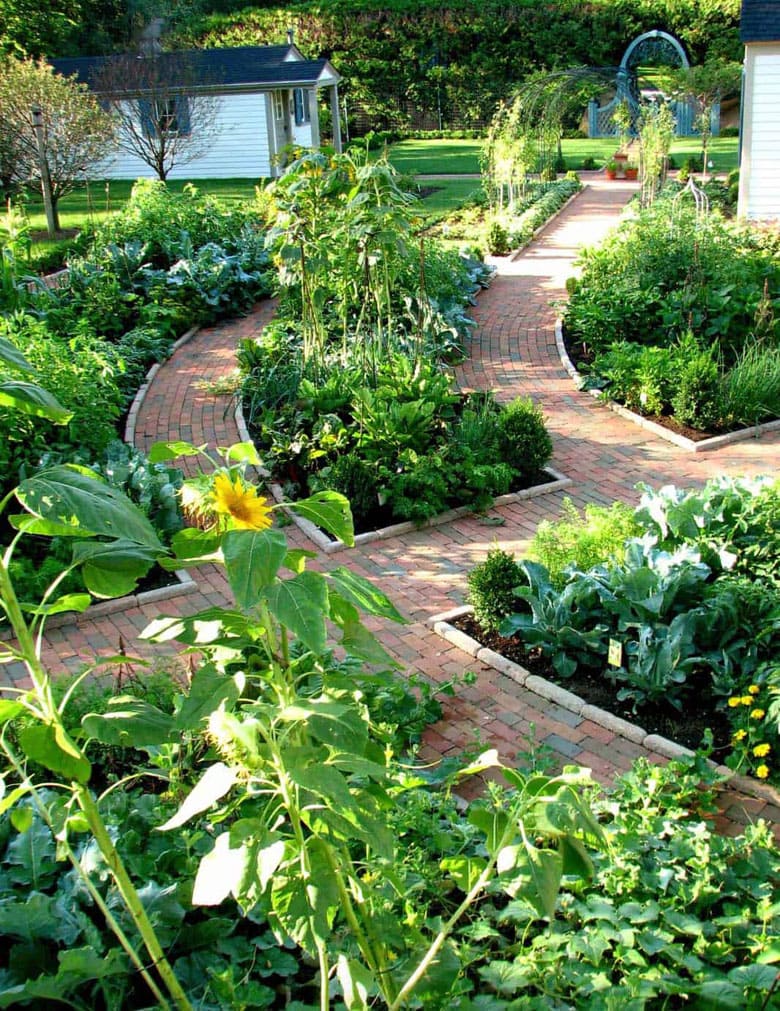
We can use these timeless garden layout designs in our own gardens. Keep in mind that garden beds do not have to be rectangles and squares. You can use curved shapes in your garden designs like in this garden above.
5. USE TRELLIS & STRUCTURES IN A VEGETABLE GARDEN LAYOUT
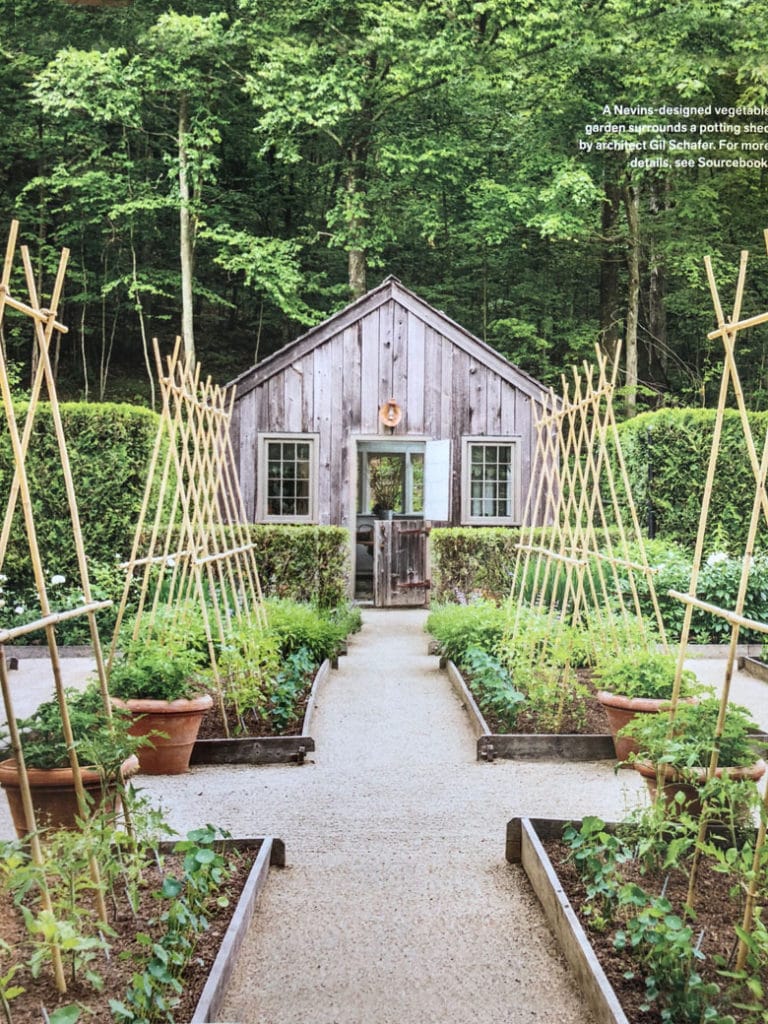
Trellises are functional garden structures that make a garden more productive. They can also be really beautiful in an edible garden like this one.
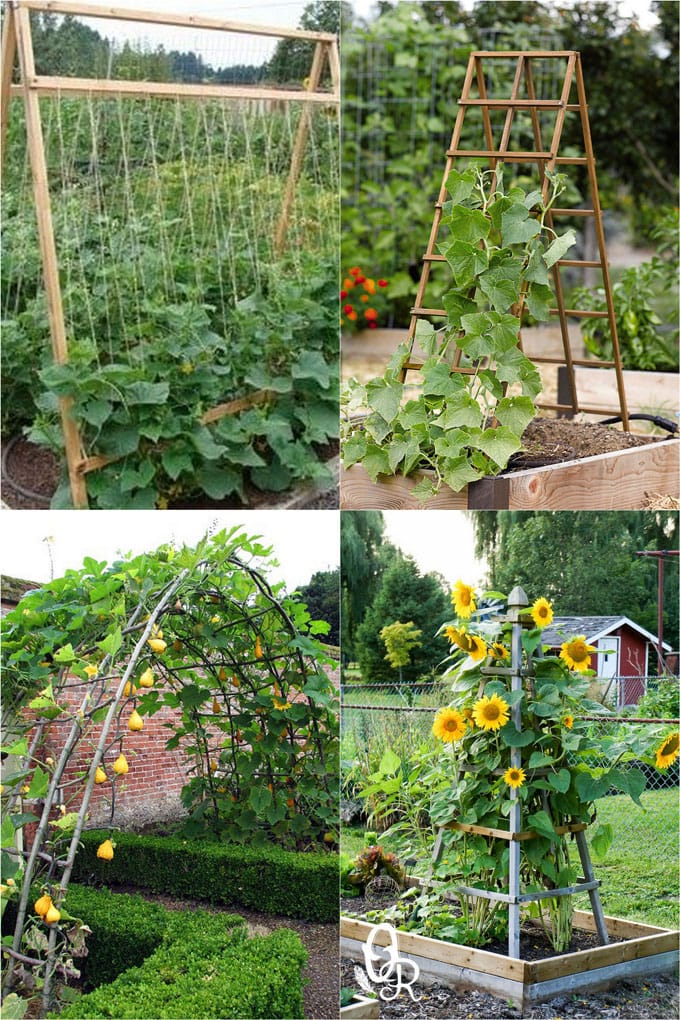
Another garden structure to consider is garden fencing, which can keep out deer and rabbits, and act as a trellis for climbing plants like beans and cucumbers.

6. FRONT YARD VEGETABLE GARDEN LAYOUT AND DESIGN
Once upon a time, the idea of a front yard vegetable garden seemed ridiculous. Now as urban farms and beautiful edible gardens are popping up everywhere, we are no longer limited to only the backyard for vegetable gardening.
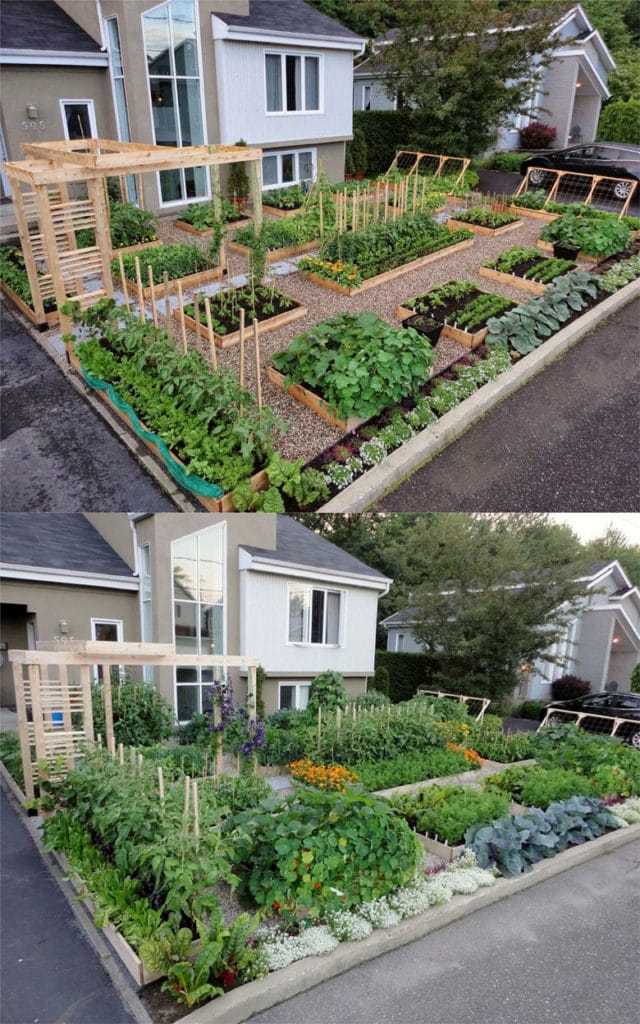

0 Comments